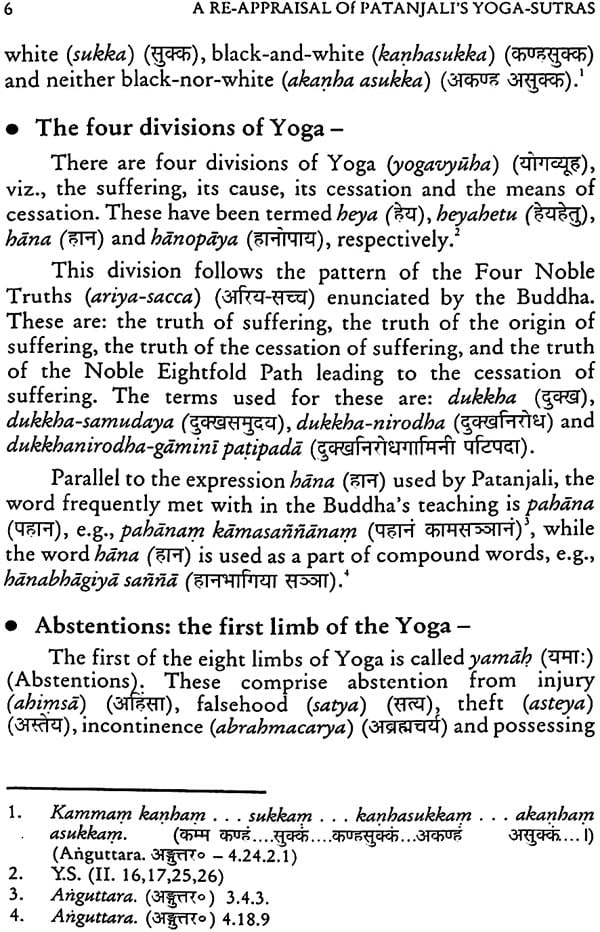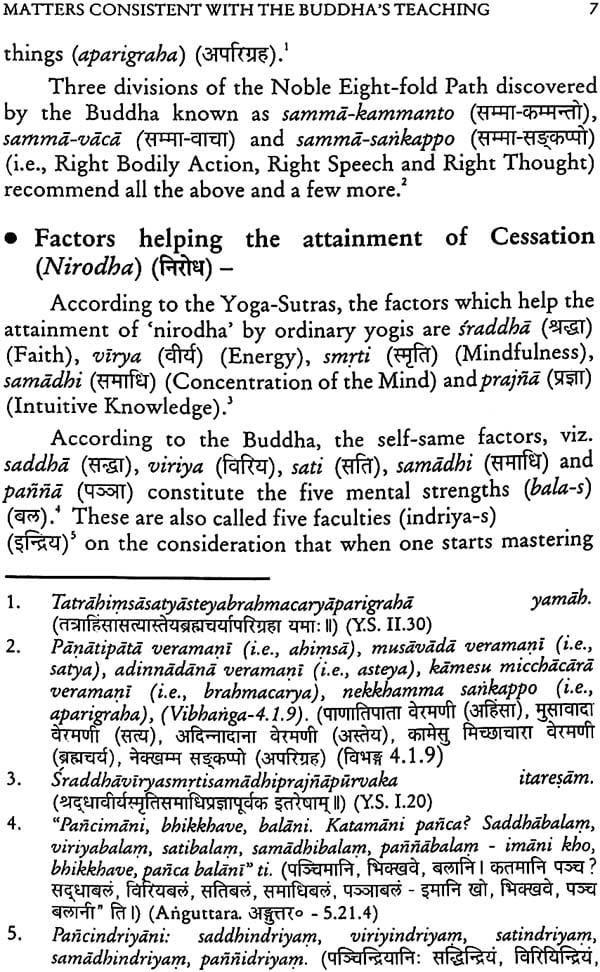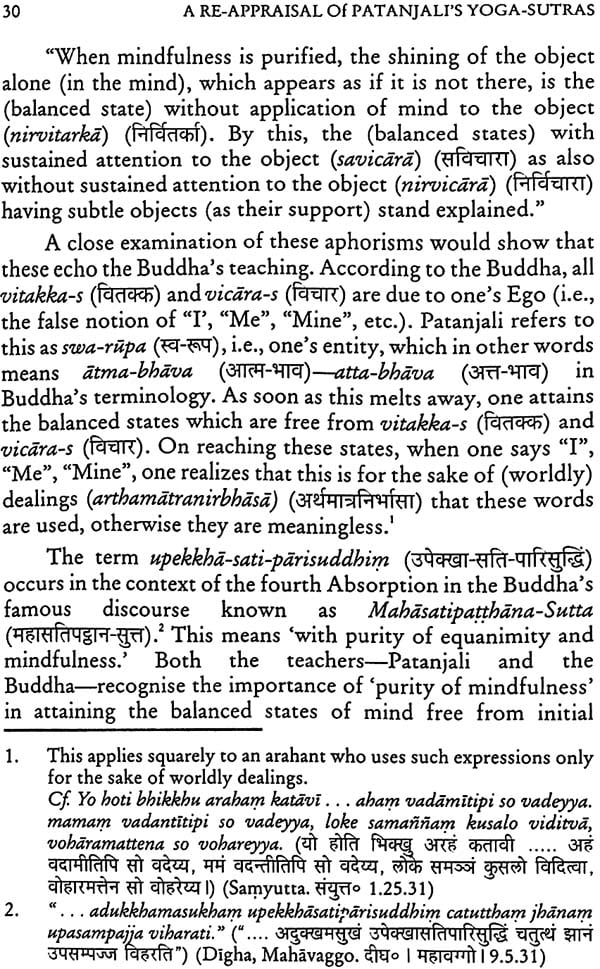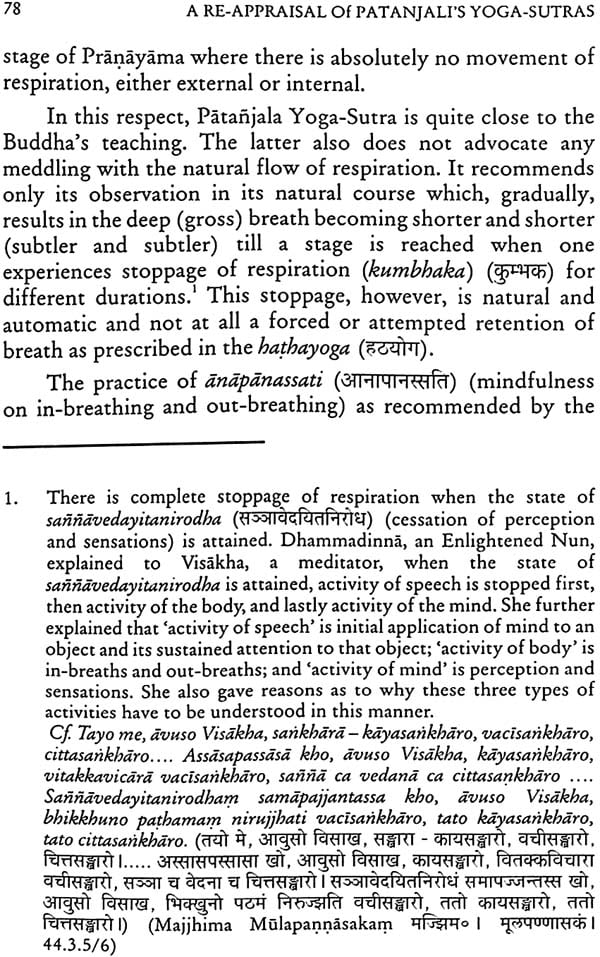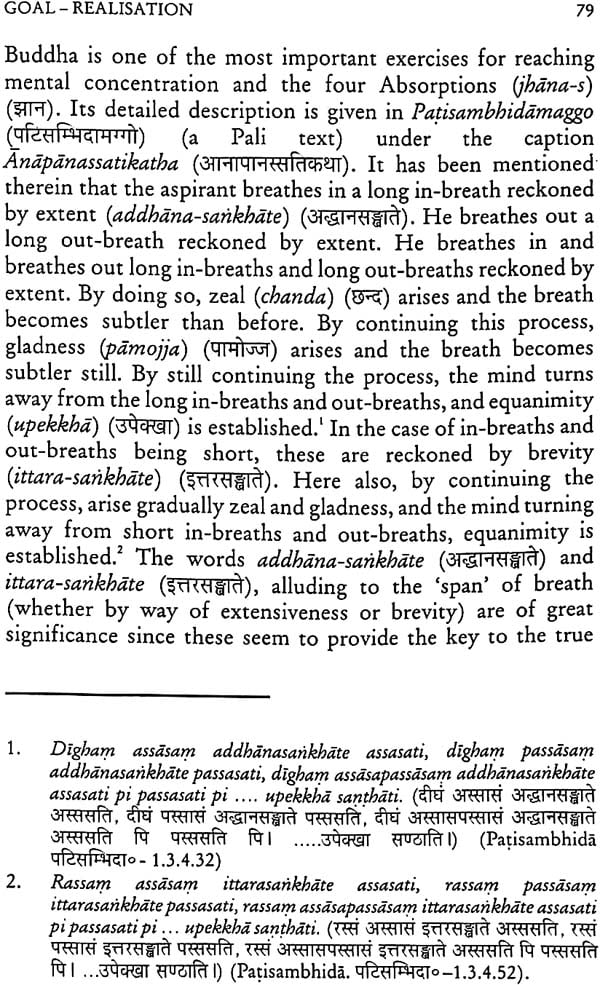
A Re-Appraisal of Patanjali's Yoga-Sutras (In the Light of the Buddha's Teaching)
Book Specification
| Item Code: | NAO719 |
| Publisher: | Vipassana Research Institute |
| Language: | English |
| Edition: | 2015 |
| ISBN: | 8174140247 |
| Pages: | 137 |
| Cover: | Paperback |
| Other Details | 8.5 inch X 5.5 inch |
| Weight | 190 gm |
Book Description
Patanjali is reputed to be the author of the treatise popularly known as the Yoga-Sutras (Aphorisms on Yoga). An Indians traditions identifies him the author of the Mahabhasya – his namesake-who lived in the 2nd century B.C. as a priest of the rular Pusyamitra of the Sunga dynasty.
Siddhartha Gotama the Buddha, who lived in the 6th centrury B.C., preceded Patanjali by a few centuries. His teaching left a very deep impression on the minds of the suffering humanity with the result that a very large number of people began to follow the path he prescribed. This required observance of certain precepts of morality, practice of concentration of mind and insight-meditation.
Ashoka, the great emperor of India whose empire flourished in the 3th century B.C., himself benefited immensely from the teaching of the Buddha and made it a mission of his life to spread it to the neighbouring countries and abroad. As a result of his efforts, millions of people took to the practice of insight-meditation which enabled them to come out of their suffering and live a life of real peace and harmony.
When Patanjali undertook to compose the Yoga-Sutras there was considerable influence of the Buddha’s teaching on the public mind. Obviously he (or, for that matter, anyone else) could not think of going ahead with such a composition without incorporating in it the essentials of the existing practice with which the people had become quite familiar. It is for this reason that the Yoga-Sutras exhibit considerable influence of the Buddha’s teaching, although some influence of the Sankhya tenets is also discernible while the innovations made by the author himself are quite obvious.
On all accounts, Patanjali can be said to be a codifier of what was considered by him to be the best in his times in the realm of meditation. About his composition Prof. A.B. Keith, however, remarks: “It is a confused text which is only intelligible by the aid of the Yoga-bhasya ascribed to Vyasa who may or may not have accurately rendered the original sense, very probably moulding it to his own views.”
Prof. Keith’s remarks are not completely out of peace. The text looks somewhat confused if it is interpreted solely with the aid of he traditional commentators, headed by Vyasa. His Yoga-bhasya is the oldest and the most important commentary on the Yoga-Sutras. This, in turn, has several sub-commentaries – the earliest one known as the Tattva-Vaisaradi by Vascaspati Misra.
The flaw with these commentaries and sub-commentaries is that these were written at a time when the Pali Canon, containing from India. The actual practice of insight-meditation taught by the Buddha had also disappeared. While Patanjali, the author of the Yoga-Sutras, could draw upon the oral as well as the living tradition of the Buddha’s teaching, which were extant in his time, his commentators and sub-commentators remained ignorant of both. This fact itself seems to have resulted in inadequate – and, at times, uncalled for – interpretations being offered by these commentators while explaning the Yoga-Sutras. The Flaw can be rectified by attempting a re-appraisal of the Yoga-Sutras in the light of the Buddha’s teaching as enshrined in the Pali Canon.
It goes to Patanjali’s credit that he was able to compile a systematic treatise on Yoga with just 194 aphorisms, using no more than 677 words. Obviously, the intrinsic worth of such a compact treatise can only be appreciated with the aid of detailed expositions which may throw light on the various topics as they come up for interpretation. This purpose is amply served by the Buddha’s expositions which are quite elaborate.
There are several advantages of referring to the Buddha’s expositions while interpreting the Yoga-Sutras: it brings one nearer to Patanjali’s real point of view so far as most of his aphorisms are concerned; history of origin or detailed explanations of technical terms become available; the ‘how’ and ‘why’ of many aphorisms become clear; a large number of illustrations based on actual experience become handy; and one comes across a wealth of information having direct or indirect connections with any topics under consideration.
• The manner of diffusing loving-kindness, compassion, sympathetic joy and equanimity (maître, karuna, mudita, upeksa) stands explained in the Buddha’s teaching in detail, while no such attempt has been made in the Yoga-bhasya while it explains the relevant aphorism.
• One comes across several living examples substantiating the practice known as “satyakriya”, Pali “saccakiriya.” In this a truthful asseverations is made of acts done by the declarant, and by the power of this merit, the effect intended to be produced takes place, however amazing its character might be. No live examples have been cited in the Yoga-bhasya.’
One becomes knowledgeable about a number of disciples of the Buddha who possessed super-normal powers in an exceptional degree, e.g.,Sariputta, Mahamoggallana, Anuruddha, Uppalavanna and so on.’The Yoga-bhasya hardly cites any name.
The present work is only a small step in the direction of re-appraisal. The treatment of various matters in this book is by no means exhaustive. Much research is needed before all facts having a bearing on the subject can come to light.
Patanjali’s Yoga-Sutras have been appended for purposes of ready reference.
We welcome constructive criticism of the book and invite suggestions for future.
Contents
| Preface | v |
| Mode of transliteration | ix |
| Abbreviations | x |
| Section-I | |
| Matters consistent with the Buddha's Teaching | |
| A. Conceptual | 1 |
| B. Terminological | 39 |
| Section -II | |
| Matters inconsistent with the Buddha's Teaching | 51 |
| Section-III | |
| Super-Normal Powers | 59 |
| Section -IV | |
| Goal -Realisation | 67 |
| Section -V | |
| The Taste of the Pudding is in the Eating | 91 |
| Annexure: Sampajanna | 99 |
| Appendix: Patanjali's Yoga-Sitras | 102 |
| Bibliography | 122 |
| List of VRI Publications | 127 |
| Vipassana Meditation Centres | 130 |
